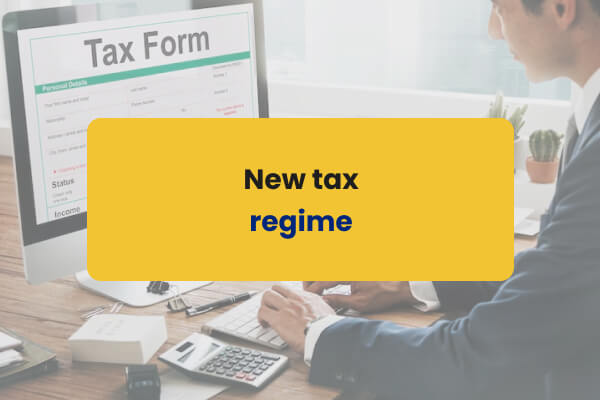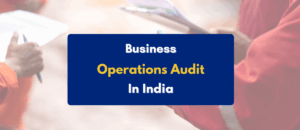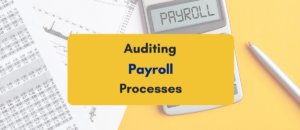Written By – PKC Desk, Edited By – Saraswathi, Reviewed By – Sanjana
What is new tax regime under section 115BAC?
The government has introduced New ‘optional’ tax regime for Individuals and HUF by slashing income tax rates where income tax deductions and exemptions were removed in order to simplify the tax system. The new tax regime is largely beneficial to the taxpayers having annual income up to 15 lakhs. And the old regime is beneficial to the high-income earning taxpayers. Hence before filing income tax return the taxpayers are advised to do comparative analysis of old and new regime and choose the most beneficial option.
INCOME TAX SLAB RATES FOR INDIVIDUALS AND HUF:
| ANNUAL INCOME | NEW REGIME TAX SLAB RATES |
| Up to Rs 2,50,000 | – |
| Rs 2,50,000 – Rs 5,00,000 | 5% (tax rebate u/s 87a is available) |
| Rs 5,00,000 – Rs 7,50,000 | 10% |
| Rs 7,50,000 – Rs 10,00,00 | 15% |
| Rs 10,00,000 – Rs 12,50,000 | 20% |
| Rs 12,50,000 – Rs 15,00,000 | 25% |
| > Rs 15,00,000 | 30% |
NOTES:
- The tax rates in the New tax regime is the same for all categories of Individuals i.e. Individuals & HUF up to 60 years of age Individuals & HUF up to 60 years of age, Senior citizens above 60 years up to 80 years and Super senior citizens above 80 years.
- The increased basic exemption limit benefit available in the old regime for senior citizen to the extent of 3 lakhs and for super senior citizens to the extent of 5 lakhs is not available in the New Tax regime.
- Basic exemption limit for NRIs is of Rs 2.5 Lakh irrespective of age.
CESS & REBATE:
Health and Education Cess: The amount of income-tax and the applicable surcharge, shall be further increased by health and education cess calculated at the rate of four percent of such income-tax and surcharge.
Rebate u/s 87a: A resident individual (whose net income does not exceed Rs. 5,00,000) can avail rebate under section 87A. It is deductible from income-tax before calculating education cess. The amount of rebate is 100 per cent of income-tax or Rs. 12,500, whichever is less.
SURCHARGE:
| Rs. 50 Lakhs – Rs. 1 Crore | Rs. 1 Crore – Rs. 2 Crores | Rs. 2 Crores – Rs. 5 Crores | Rs. 5 crores – Rs. 10 Crores | Exceeding Rs. 10 Crores |
| 10% | 15% | 25% | 37% | 37% |
Note:
- The enhanced surcharge of 25% & 37%, as the case may be, is not levied, from income chargeable to tax under sections 111A, 112A and 115AD and dividend income from domestic companies. Hence, the maximum rate of surcharge on tax payable on such incomes shall be 15%.
LIST OF COMMON EXEMPTIONS AND DEDUCTIONS NOT ALLOWED UNDER NEW TAX REGIME:
SALARY:
- Leave Travel Allowance (LTA)
- House Rent Allowance (HRA)
- Conveyance allowance
- Daily expenses in the course of employment
- Relocation allowance
- Helper allowance
- Children education allowance
- Other special allowances [Section 10(14)]
- Standard deduction on salary
- Professional tax and entertainment tax
PROFIT AND GAINS FROM BUSINESS AND PROFESSION:
- Additional depreciation under section 32
- Investment allowance under section 32AD
- Sector-specific business deductions under section 33AB and 33ABA
- Expenditure on scientific research under section 35
- Capital expenditure under section 35AD
- Exemption under section 10AA for SEZ units
UNABSORBED DEPRECIATION AND BUSINESS LOSS
- In the case of a business income, an individual or HUF cannot claim set-off of the brought forward business loss or unabsorbed depreciation.
- The deductions are not available under the new regime to the extent they relate to deductions/exemptions withdrawn.
INCOME FROM HOUSE PROPERTY:
- Interest on housing loan (Section 24)
- Set off of loss of house property of Rs.2 lakh against salary income
DEDUCTIONS UNDER CHAPTER VI-A
All deductions under chapter VI-A (80C, 80D, 80E and so on) except section 80CCD (2)
INCOME FROM OTHER SOURCES:
- Deduction from family pension income
LIST OF DEDUCTIONS AND ALLOWANCES RETAINED UNDER THE NEW TAX REGIME:
Allowances:
- Transport Allowance for Differently Abled Employees
- Any Allowance granted to meet the cost of travel on tour or on transfer;
- Daily Allowance to meet the ordinary daily charges incurred by an employee on account of absence from his normal place of duty.
Deductions:
- Retirement benefits, gratuity etc.
- commutation of pension
- leave encashment on retirement
- retrenchment compensation
- VRS benefits
- Employer contribution to provident fund
- NPS withdrawal benefits
- Education scholarships
- Payments of awards instituted in public interest
SWITCHING OF OPTION TO PAY TAX UNDER OLD vs NEW regime
| NATURE OF INCOME | SWITCHING OF OPTIONS |
| Income from Salary | The employee should provide declaration to the employer at the beginning of the year to choose the regime. If new tax slab regime is opted at the beginning of the year, it cannot be changed anytime during the year for TDS purpose, however the option can be changed at the time of filing of Income-tax return. |
| Income from Business & Profession | In case of business or profession income, the option to choose between the tax regimes is available only once for a particular business. |
| Income from other sources/Income from house property/ Income from capital gains | The assessee has an option has option to make a choice between the old tax regime and new tax regime every year. |
ALTERNATE MINIMUM TAX:
Provisions of Section 115JC are not applicable, when an Individual/HUF opts for new tax regime and his accumulated AMT Credit will also be lapsed and assessee cannot carry forward the same for set off.
FORM FOR EXERCISING/WITHDRAWAL UNDER NEW TAX REGIME
Every individual or HUF shall furnish FORM 10-IE for exercising option to pay tax and also for opting out from new tax regime before filing the income tax return of the relevant assessment year.
DUE DATE OF FILING FORM 10-IE
For person having income from business/profession the form should be furnished before the due date of filing Income Tax Return specified under section 139(1)Note: FORM 10-IE is not required to be filed by Individuals/HUF not having income from business / profession.
Author

Chandhini

 Expert verified
Expert verified 

